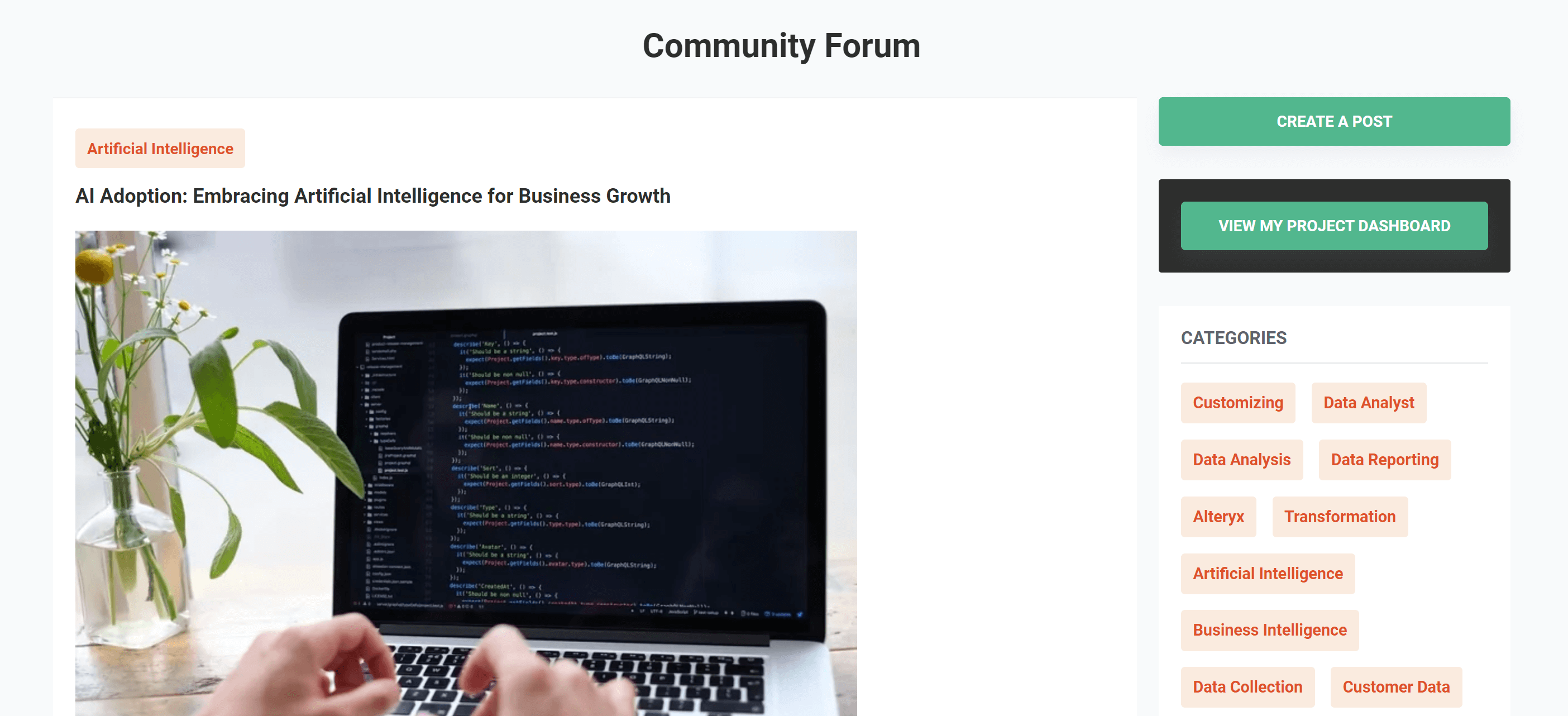How Data Analytics is Revolutionising Customer Experience Globally

Table of content
What Data Does Customer Analytics Use?
What is the Role of Analytics in Customer Experience?
Why is Customer Experience Analytics Important?
How to Use Customer Experience Analytics to Improve Customer
4 Ways Data Can Be Used to Improve Customer Experience
How to Perform a Customer Data Analysis
Boost Your Customer Experience with PangaeaX
Exploring Top Customer Data Analytics Tools
Conclusion
In today’s hyper-competitive marketplace, understanding your customers is more crucial than ever. That’s where customer experience analytics comes in. But what exactly is customer experience analytics? It’s the process of examining and understanding how customers interact with a business across various stages of their journey. By using cutting-edge technologies such as machine learning and data mining, businesses can collect and analyze customer actions, preferences, and feedback.
With the insights gained, businesses can uncover hidden patterns, predict future behaviors, and ultimately personalize experiences to improve customer satisfaction and retention.
What Data Does Customer Analytics Use?
To develop a holistic view of customer behaviour, customer experience analytics taps into an extensive array of data types. This data is sourced from diverse channels such as websites, mobile apps, social media platforms, and even in-store visits. So, what data does customer analytics use?
- Behavioral data: This includes website browsing history, social media engagement, purchase history, and customer service interactions. Understanding how customers behave across different touchpoints helps businesses optimize their strategies.
- Transactional data: This refers to information on customer purchases, such as the amount spent, the frequency of purchases, and what specific products or services were bought.
- Demographic data: Basic information such as age, gender, location, and occupation helps companies segment their audience more effectively.
- Psychographic data: This type of data digs deeper into a customer’s lifestyle, interests, and values, enabling more personalized marketing.
- Voice of Customer (VOC): This captures customer expectations, likes, and dislikes, often through feedback mechanisms like surveys and reviews. Key metrics here include Net Promoter Score (NPS), Customer Satisfaction (CSAT), and Customer Effort Score (CES), which give direct insight into customer loyalty and the ease of resolving their concerns.
What is the Role of Analytics in Customer Experience?
So, what is the role of analytics in customer experience? It’s pivotal in shaping how businesses interact with their customers. By utilizing advanced analytics, companies can gain actionable insights that help them:
- Understanding customer behavior: Identifying patterns and trends in how customers engage with products and services.
- Segmenting customers: Grouping customers based on demographics, behaviors, or preferences to offer targeted marketing efforts.
- Predicting customer behavior: Anticipating future actions using predictive modeling, allowing businesses to make proactive decisions.
- Optimizing customer experience: By pinpointing areas of friction in the customer journey, analytics allows for smoother processes and more satisfying interactions.
- Generating insights for product development: The data gathered can also be used to inform new product innovations that meet evolving customer needs.
Why is Customer Experience Analytics Important?
Why is customer experience analytics important? Simply put, it’s a game-changer for businesses looking to prioritize their customers. By mapping out the customer journey, companies can better understand individual preferences and adjust their offerings to meet specific needs.
Additionally, this type of analysis helps pinpoint pain points in the customer journey. By addressing these issues proactively, businesses can increase Customer Satisfaction and reduce churn. Predictive analytics further allows companies to forecast future behavior, enabling strategic planning that keeps customer needs at the forefront.
How to Use Customer Experience Analytics to Improve customer
Utilizing customer experience analytics effectively requires a systematic approach. Below are key strategies to maximize the benefits of this powerful tool:
- Personalize experiences: By leveraging insights from behavioral and psychographic data, businesses can tailor interactions to meet the unique needs of each customer.
- Reduce customer churn: Analytics can identify signs of customer dissatisfaction early, allowing businesses to take action to retain them before they decide to leave.
- Increase repurchase rates: By examining past purchase history and understanding customer preferences, companies can target individuals with personalized offers, thereby increasing repurchase rates.
4 Ways Data Can Be Used to Improve Customer Experience
Leveraging customer experience analytics opens the door to endless possibilities for improving customer satisfaction. Here are four ways businesses can use customer data to enhance the overall experience:
- Track customer behavior: Analytics can monitor how customers engage with your business across different touchpoints, providing valuable insights that help optimize the customer journey.
- Design a satisfactory data-driven customer experience: With data in hand, businesses can create more customer-focused experiences that directly address their pain points and enhance Customer Satisfaction.
- Create a loyal customer base: Personalized marketing, informed by accurate customer data, can help cultivate stronger connections, leading to increased loyalty and long-term customer relationships.
- Take advantage of predictive analytics: By forecasting future customer behavior, businesses can proactively adjust their strategies to meet evolving demands.
How to Perform a Customer Data Analysis
Performing a customer experience analytics strategy requires the following steps:
- Define your objectives: Clearly outline what you aim to achieve—whether it’s increasing Customer Satisfaction or predicting customer behavior.
- Collect customer data: Gather data from various touchpoints, ensuring compliance with data privacy regulations.
- Organize the data: Clean and structure your data to make it easy to analyze.
- Analyze customer data: Use advanced statistical methods or AI algorithms to discover patterns and actionable insights.
- Create a data-driven strategy: Apply the insights to develop targeted, effective strategies that enhance the customer experience.
- Iterate: Continuously refine and repeat this process to stay relevant as market trends evolve.
Boost Your Customer Experience with PangaeaX
With the right customer experience analytics strategy in place, you can transform the way your business engages with customers. From reducing churn to enhancing Customer Satisfaction, data analytics offers powerful insights that drive business success. At PangaeaX, we help companies leverage analytics to unlock their full potential, providing the tools needed to foster growth, loyalty, and improved customer experiences.
Exploring Top Customer Data Analytics Tools
In today’s digital landscape, numerous customer experience tools are available to help businesses dive deep into data analytics. To streamline your journey toward improving customer experience, we’ve highlighted a few leading tools that excel in this space.
Fullstory
Fullstory is a robust behavioral data platform designed to help businesses better understand and enhance their online customer experience.
Key Features:
- One of Fullstory’s standout features is its ability to replay user sessions, providing a true-to-life view of what your customers experience on your site.
- Interactive heatmaps and conversion funnels allow businesses to visualize customer behavior and analyze where improvements are needed.
- A unique feature of Fullstory is its “rage click” detection, which pinpoints areas that may cause customer frustration.
- Fullstory also offers strong segmentation capabilities, enabling businesses to perform targeted analyses that are both user-friendly and visually appealing.
Google Analytics
As the go-to web analytics tool for businesses of all sizes, Google Analytics is known for tracking and reporting website traffic while offering a comprehensive look at user behavior.
Key Features:
- Audience segmentation and acquisition reports give insights into where users are coming from and how they interact with your site.
- Behavior reports help identify which pages are driving the most engagement, and conversion tracking offers a deeper look into how visitors convert into customers.
- Google Analytics integrates seamlessly with other Google products, making it a powerful yet cost-effective choice for any business.
LogRocket
LogRocket is a front-end monitoring solution designed to help developers troubleshoot issues in their web applications. It records user interactions and provides real-time renderings of every page.
Key Features:
- Session replay allows developers to see exactly how users are interacting with their applications.
- The tool also includes performance monitoring and error reporting, making it a valuable resource for identifying and fixing front-end issues quickly.
Mixpanel
Mixpanel is a user analytics platform that focuses on tracking user interactions within web and mobile applications, offering insights into customer behavior.
Key Features:
- Event tracking allows businesses to monitor user behavior in real-time, while funnel analysis helps identify drop-off points in the customer journey.
- Mixpanel also offers user segmentation and retention analysis, although it may not be as comprehensive in providing a full customer journey mapping as some of its competitors, like Fullstory.
These tools each bring unique strengths to the table, helping businesses harness the power of customer experience analytics to understand their audience better and enhance their online interactions.
Conclusion :
Customer experience analytics is a powerful tool that helps businesses, including PangaeaX, better understand and optimize their interactions with customers. By leveraging data from multiple touchpoints, companies can gain valuable insights into customer behavior, segment audiences, predict future trends, and personalize experiences to boost satisfaction and retention. Tools like Fullstory, Google Analytics, LogRocket, and Mixpanel offer robust features that enhance this analytical process, enabling businesses to fine-tune their strategies, reduce churn, and foster long-term customer loyalty. With the right analytics approach, PangaeaX can help businesses unlock their full potential and create more meaningful, data-driven customer experiences.
Get your data results fast and accelerate your business performance with the insights you need today.



